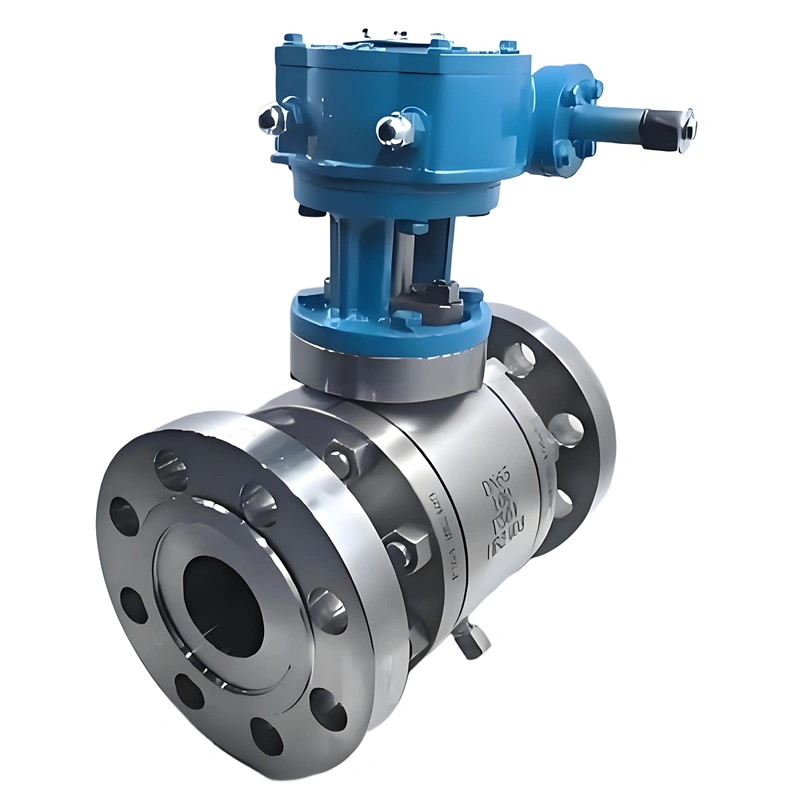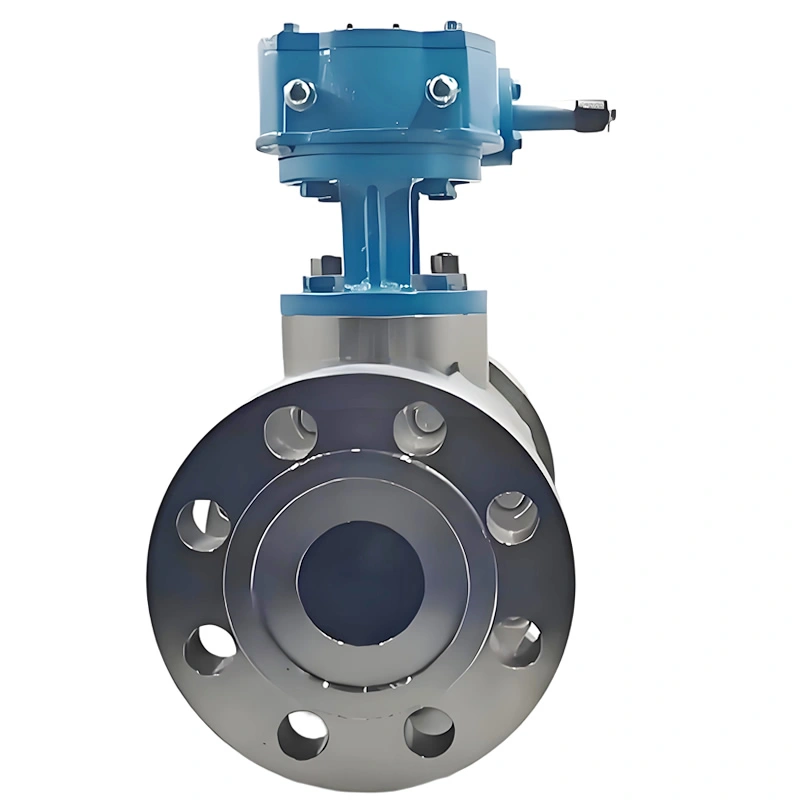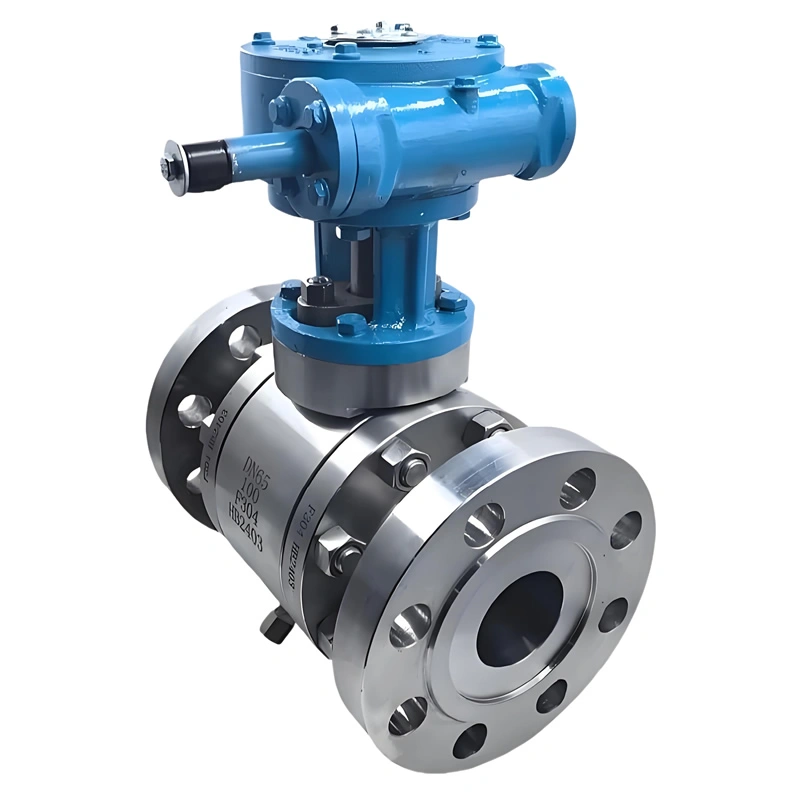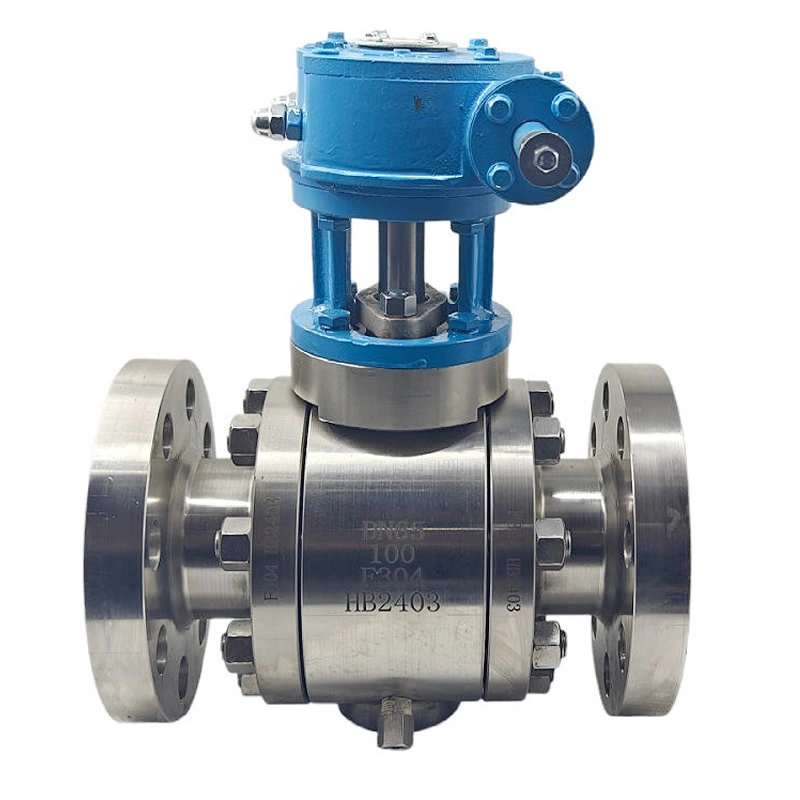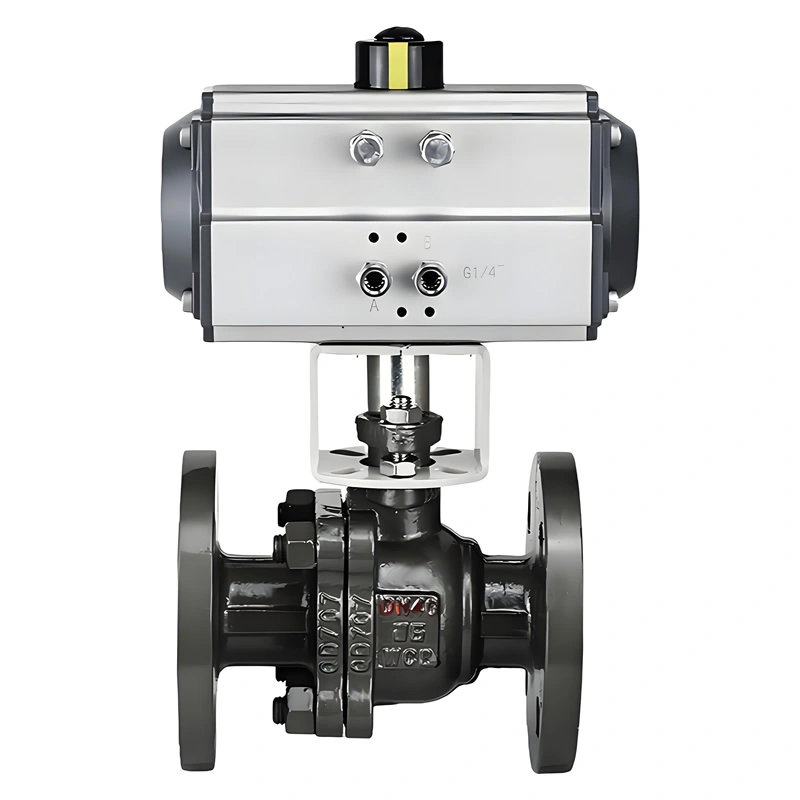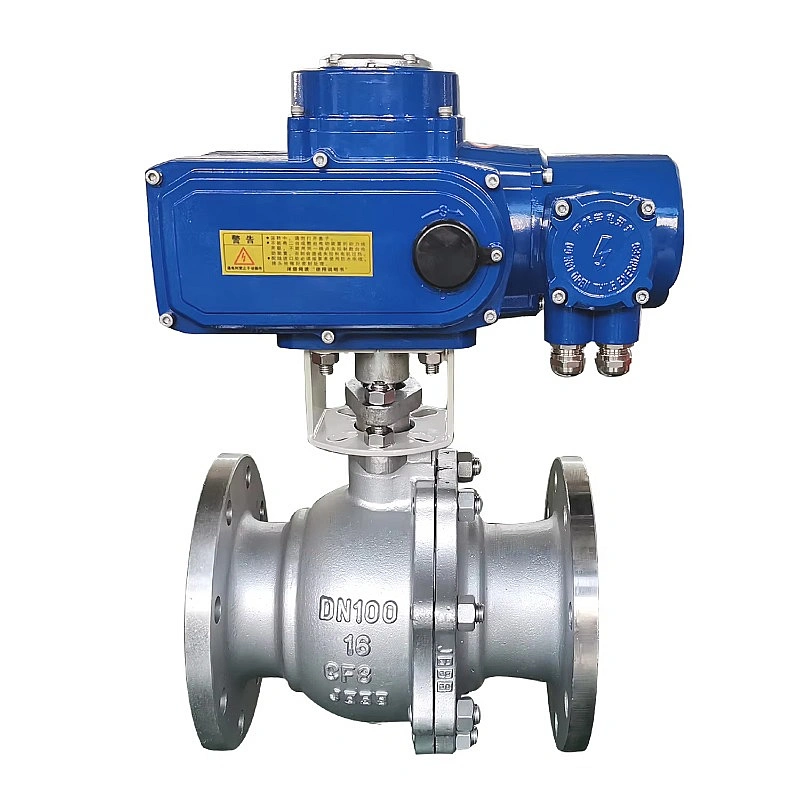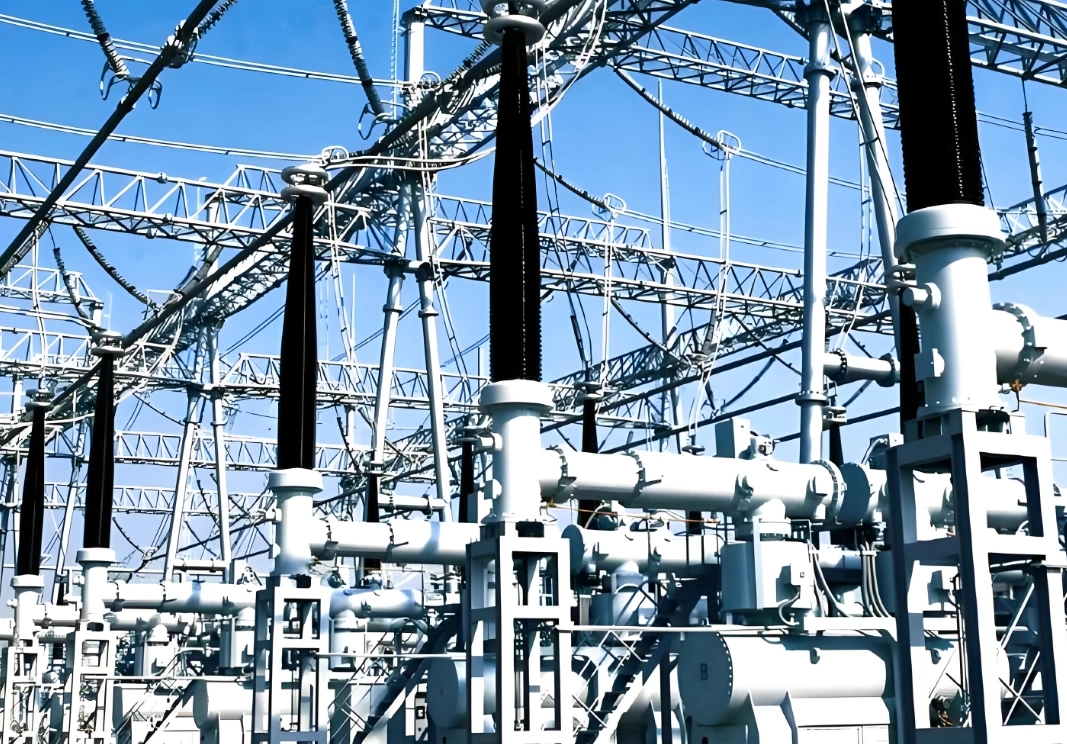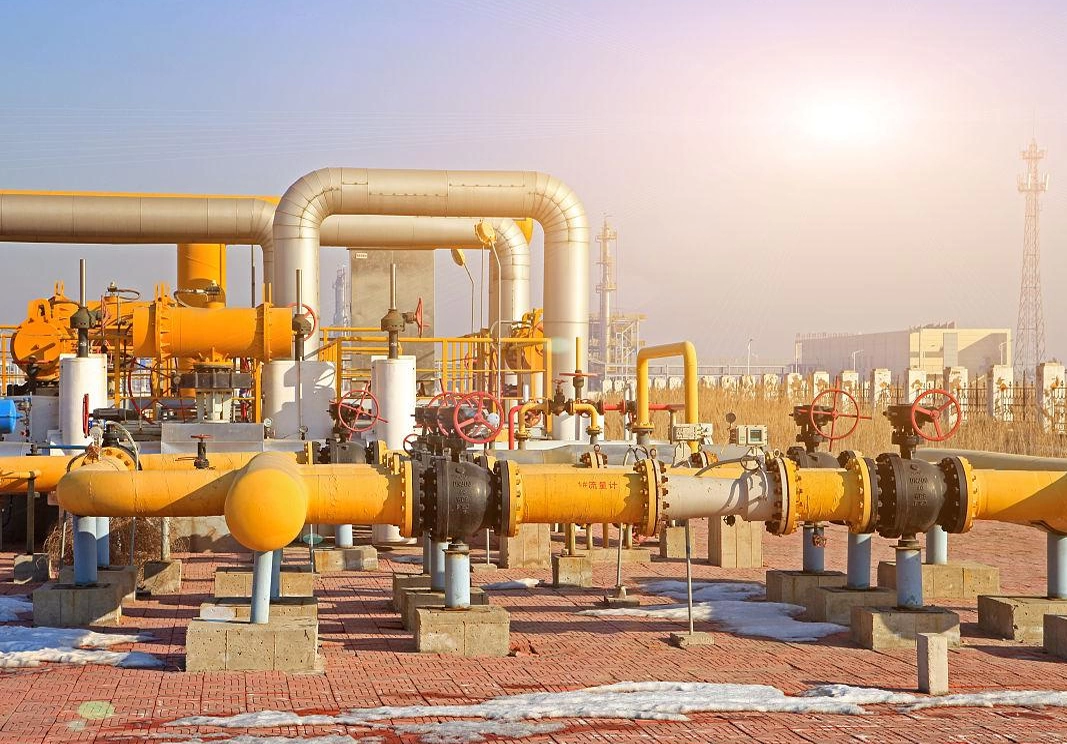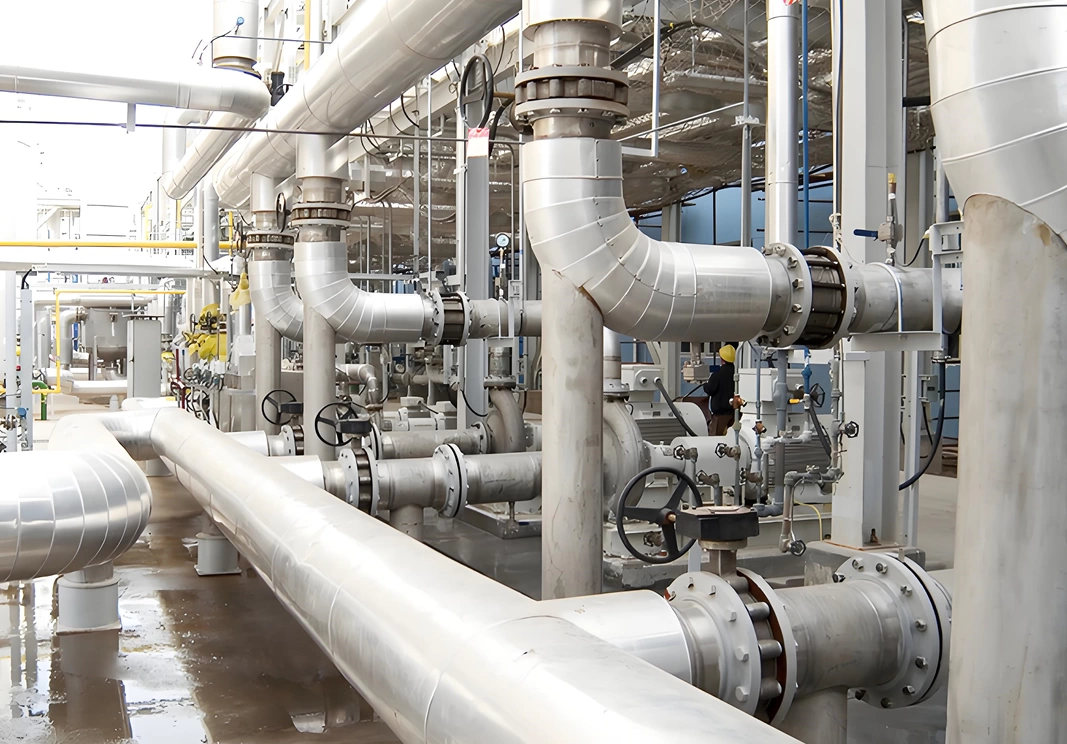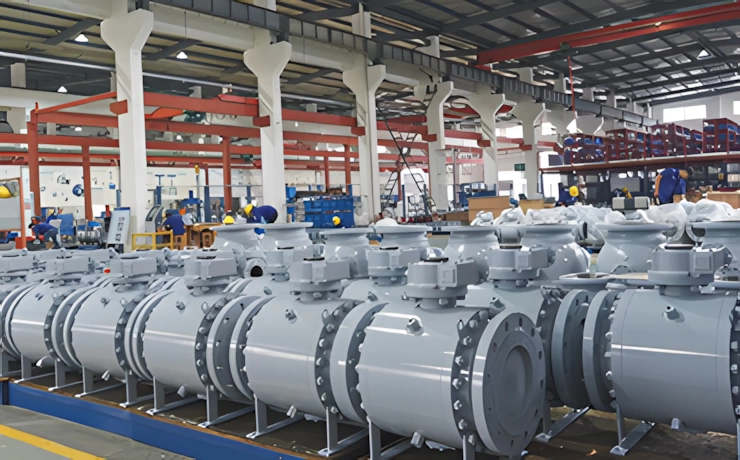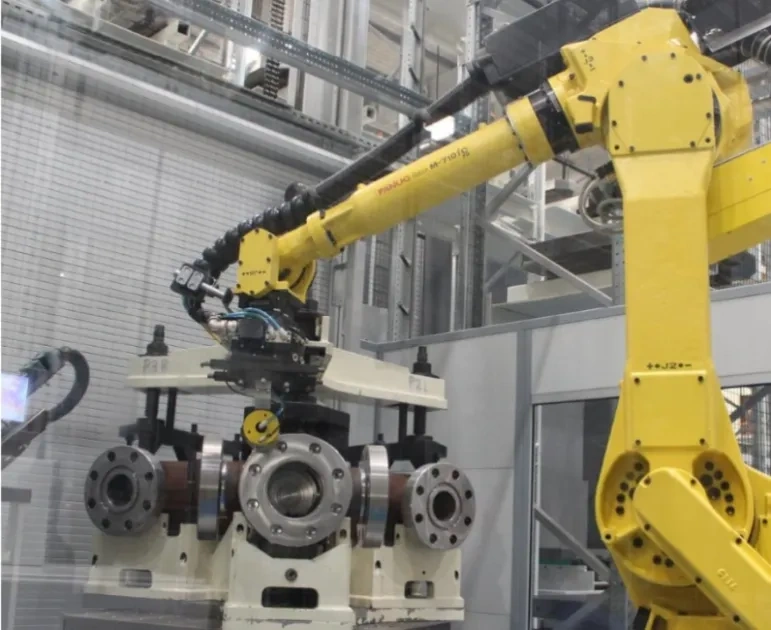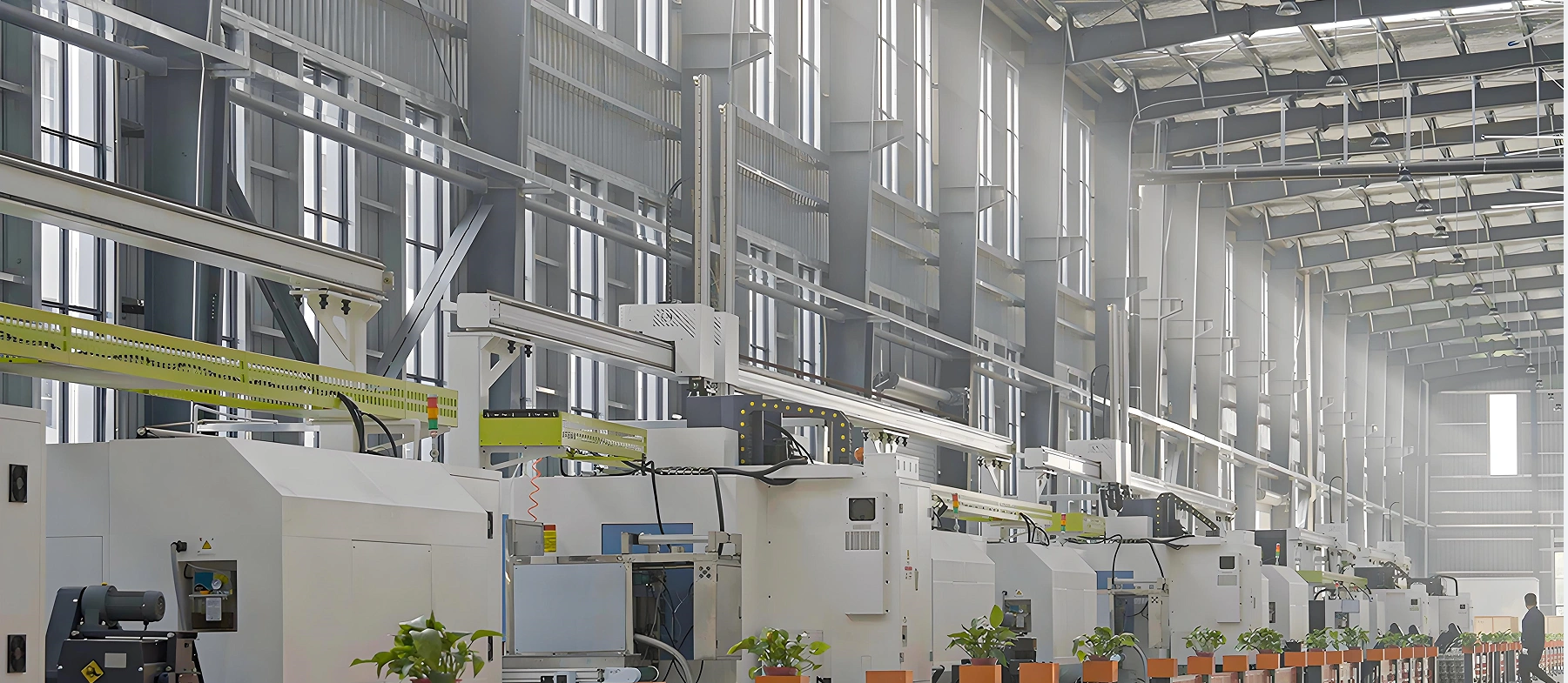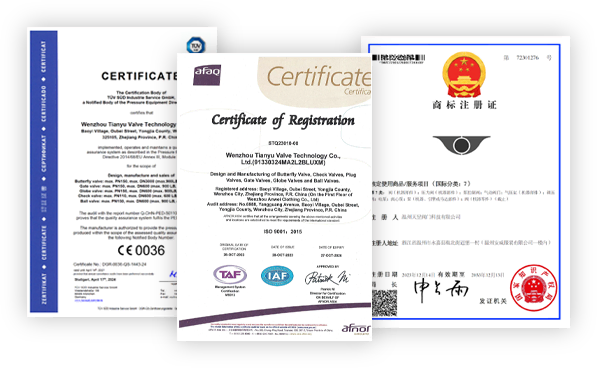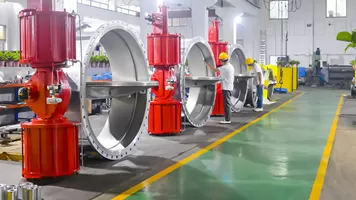304 stainless steel is the most widely used corrosion-resistant alloy, offering a balance of performance, availability, and cost-effectiveness. Its chromium-nickel composition forms a passive oxide layer that resists rust, pitting, and crevice corrosion in most industrial and municipal media—including water, steam, ethanol, and mild acids (e.g., acetic acid).
In a coastal municipal water treatment plant, for example, a 304 stainless steel ball valve maintained integrity for over 10 years, while a carbon steel valve corroded within 3 years. The material’s compatibility with food-grade and pharmaceutical media also makes it suitable for sanitary applications, where contamination risks are critical. Additionally, 304 stainless steel’s weldability allows for on-site modifications or repairs, a valuable advantage in remote installations.
The floating ball design is a defining feature of this valve, setting it apart from trunnion-mounted alternatives. The ball is not fixed to the stem; instead, it “floats” within the valve body, shifting under media pressure to press firmly against the downstream seat. This self-enhancing sealing mechanism improves with increasing pressure, delivering ANSI/FCI Class VI bubble-tight performance (virtually zero leakage).
In chemical processing applications, this design prevents costly media loss and environmental contamination. For instance, in a pharmaceutical plant’s API manufacturing line, the valve maintained zero leakage of sterile process water, ensuring product purity and regulatory compliance. The precision-ground ball surface (Ra ≤0.2μm) ensures uniform contact with the seat, further enhancing sealing reliability over thousands of operating cycles.
The full-port design eliminates flow restrictions by matching the valve’s bore to the pipeline diameter. Unlike reduced-port valves, which narrow the flow path and increase pressure drop, full-port 304 stainless steel ball valves allow media to pass through with minimal resistance—reducing pump energy consumption by up to 25% in high-flow systems.
This design also simplifies pipeline maintenance, as pigging (pipe cleaning) tools can pass through the valve unobstructed. In a refinery’s gasoline blending system, the full-port valve reduced pressure drop by 30% compared to a reduced-port alternative, translating to annual energy savings of $12,000 for a single DN300 valve. For water distribution networks, the low flow resistance ensures consistent pressure across large distances, improving service reliability.
Flanged connections (ANSI B16.5) offer distinct advantages for industrial and municipal applications:
- Secure Sealing: The RF flange paired with spiral-wound gaskets creates a leak-tight joint that resists vibration, thermal cycling, and pressure fluctuations. In a chemical plant’s reactor feed line, this prevented fugitive emissions of hazardous chemicals, meeting environmental regulations (e.g., EPA, EU REACH).
- Easy Maintenance: Flanged valves can be disassembled without cutting pipelines, simplifying seat replacement, stem packing adjustment, or actuator maintenance. This reduces downtime by 50% compared to welded valves, critical for continuous-process industries like power generation.
- Global Compatibility: ANSI B16.5 compliance ensures compatibility with standard pipelines from other manufacturers, making the valve suitable for multi-vendor projects and international installations.
The valve’s modular design supports multiple operation modes and seal materials, adapting to diverse application needs:
- Manual Operation: Handwheel operators suit low-frequency use (e.g., emergency isolation), while worm gear operators reduce torque for large valves (DN200+), enabling single-person operation.
- Automated Actuation: Pneumatic (double-acting or spring-return) and electric actuators support remote control and process automation. Spring-return pneumatic actuators provide fail-safe operation (auto-close/auto-open) during air supply loss, a critical safety feature in oil & gas or chemical facilities.
- Seal Compatibility: PTFE seals suit aggressive chemicals (acids, alkalis, solvents), EPDM seals for water and steam, and FKM seals for oil and fuel. This versatility allows the valve to handle media ranging from potable water to industrial solvents, eliminating the need for multiple valve types.
- 304 Stainless Steel Verification: Raw material billets undergo spectral analysis to confirm chemical composition (Cr: 18–20%, Ni: 8–10.5%) and ultrasonic testing to detect internal defects (porosity, cracks). Mechanical testing (tensile strength ≥515MPa, yield strength ≥205MPa) ensures compliance with ASTM A351.
- Seal Material Testing: PTFE/EPDM/FKM seals are tested for compression set, tensile strength, and chemical resistance at operational temperatures (-20℃~200℃) to ensure long-term performance. FDA-compliant seals undergo additional purity testing for food/pharmaceutical applications.
- Casting: The body and bonnet are produced via investment casting for 304 stainless steel, ensuring dimensional accuracy and a smooth internal surface. Castings are heat-treated (solution annealing at 1010–1120℃, water-quenched) to restore corrosion resistance and relieve internal stresses.
- Machining: CNC turning and milling centers precision-machine the body, bonnet, and flange faces. Flange dimensions are machined to ANSI B16.5 standards, with flatness tolerance ≤0.05mm/m and surface finish Ra ≤3.2μm for proper gasket seating. The body’s internal seat pocket is machined to exact tolerances (±0.02mm) to ensure uniform seat contact.
- Ball Production: Solid 304 stainless steel blanks are turned, ground, and lapped to achieve a mirror-like surface finish (Ra ≤0.2μm). The ball’s diameter is precision-controlled to ensure a tight fit within the seat, with a tolerance of ±0.01mm.
- Stem Machining: Valves stems are CNC-machined from 304 or 17-4PH stainless steel, with a polished surface to reduce friction. The anti-blowout feature is integrated during machining, ensuring the stem cannot be ejected under pressure—meeting API 608 safety requirements.
- Component Assembly: The ball, stem, seat, and packing are assembled into the body-bonnet assembly. The seat is press-fitted into the body pocket, with spring loading to compensate for thermal expansion and wear. The bonnet is secured with high-strength bolts, compressing the spiral-wound gasket to form a leak-tight seal.
- Hydrostatic Testing: The valve undergoes shell testing at 1.5× rated pressure and seat testing at 1.1× rated pressure, with a 30-minute hold time. No leakage, sweating, or deformation is allowed. For gas service, pneumatic testing (0.6MPa) is performed to confirm bubble-tight sealing.
- Operational Testing: The valve is cycled 100 times to verify smooth operation, torque consistency, and seal integrity. Manual operators are tested for torque requirements (≤30N·m for DN50), while automated actuators are calibrated for response time (10–30 seconds) and position accuracy.
- Non-Destructive Testing (NDT): Critical welds (if applicable) undergo liquid penetrant testing (PT) to detect surface cracks; cast components are inspected via magnetic particle testing (MPI) for surface defects.
- Visual Inspection: The valve is inspected for surface finish, proper marking (port size, pressure rating, material, serial number), and compliance with ASME B16.34.
- Documentation: Each valve is accompanied by a Material Test Report (MTR) for 304 stainless steel, hydrostatic test report, and compliance certificates (API 608, ISO 9001). For sanitary applications, FDA certification and material purity reports are provided.



